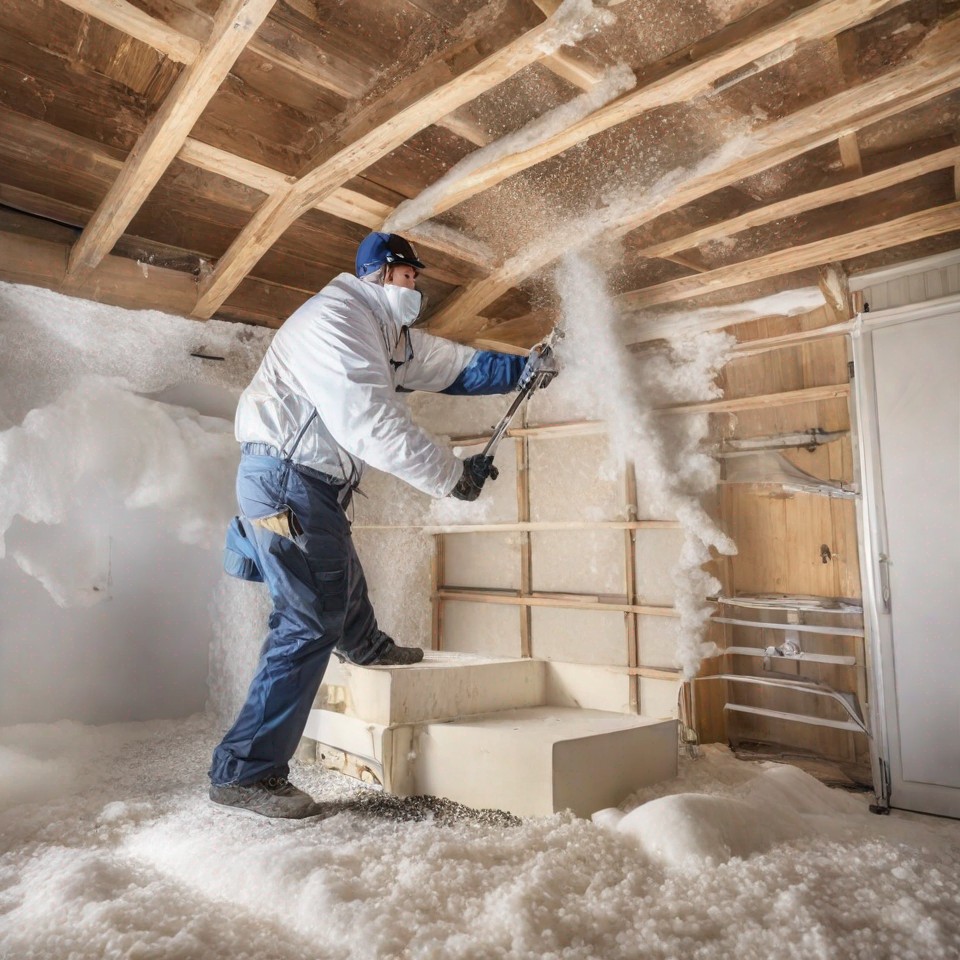
Disadvantages and Long-Term Effects of Spray Foam Insulation: An Expert Analysis
Disadvantages and Long-Term Effects of Spray Foam Insulation: An Expert Analysis
Spray foam insulation, while heralded for its energy efficiency, has increasingly come under scrutiny for its potential to cause significant structural damage, particularly in attics. As both tenants and landlords look to improve energy conservation, understanding the disadvantages of spray foam insulation becomes crucial. Issues such as spray foam insulation moisture problems and the resulting long-term effects can lead to severe complications, including roof damage that may necessitate costly repairs or replacements. Furthermore, the spray foam insulation mortgage problem is becoming a concern, with some mortgage providers wary of properties containing this type of insulation. In this analysis, we'll delve into the problems associated with spray foam insulation, providing expert insights and guidance on navigating potential claims and ensuring both tenants and landlords are protected.

Hidden Dangers of Spray Foam Insulation
Common Issues with Spray Foam Insulation
Spray foam insulation is not without its problems. A significant concern is the risk of spray foam insulation moisture problems. If not installed correctly, spray foam can trap moisture within roof spaces, leading to mould growth and wood rot. Over time, this moisture can compromise the structural integrity of your home, resulting in costly repairs. Additionally, problems with spray foam insulation in attics are common, particularly when it comes to ventilation issues. The foam can block air flow, causing heat build-up and potentially harming roof shingles. Another prevalent issue is the spray foam insulation mortgage problem. Some mortgage lenders are hesitant to finance homes with spray foam insulation due to these potential risks, making it more difficult for homeowners to secure loans. Addressing these issues promptly is essential to avoid long-term detrimental effects on your property.
Long-Term Effects of Spray Foam Insulation
The long-term effects of spray foam insulation can be significant and often problematic. Over time, the initial installation can deteriorate, leading to gaps or cracks that undermine its insulating capabilities. This degradation can result in heat loss, negating the energy efficiency benefits. More worryingly, as the foam ages, it may release volatile organic compounds (VOCs) into the home, potentially impacting indoor air quality and posing health risks. Furthermore, the foam's rigidity can cause structural stress, particularly in timber-framed buildings, leading to potential damage. These structural stresses might not only necessitate costly repairs but could also impact the property's value. Notably, these disadvantages of spray foam insulation can complicate property sales, as prospective buyers may be wary of these hidden dangers. Consequently, understanding and addressing these long-term effects is crucial for maintaining property integrity and value over time.

Spray Foam Insulation Moisture Problems
Spray foam insulation moisture problems are a prevalent issue that can have serious repercussions for homeowners. When spray foam is applied, it creates an airtight seal that, while excellent for energy efficiency, can also trap moisture within walls and roofs. This trapped moisture is a breeding ground for mould and mildew, which can spread rapidly, causing health concerns for occupants. Additionally, sustained moisture exposure can lead to wood rot, compromising the structural integrity of key building components. The moisture can also promote rust and corrosion of metal fixtures, leading to further deterioration. Attics are particularly susceptible, as poor ventilation coupled with insulation can exacerbate these problems. Identifying and rectifying moisture issues promptly is essential to prevent long-term damage. Homeowners should consider regular inspections and proper ventilation strategies to mitigate these moisture concerns effectively, ensuring the longevity and safety of their properties.
Financial and Legal Consequences
Spray Foam Insulation Mortgage Problem
The spray foam insulation mortgage problem is an emerging concern for homeowners and prospective buyers. Some mortgage providers are increasingly reluctant to lend on properties with spray foam insulation due to the potential risks and costs associated with its removal or remediation. This hesitation stems from the issues with spray foam insulation, such as moisture problems and structural damage, which can significantly reduce a property's value. As a result, homeowners might find it difficult to refinance or sell their properties, potentially leading to financial strain. Additionally, insurers may also be wary, leading to higher premiums or denied coverage. For landlords, this can translate into longer vacancies and higher turnover costs. To mitigate these risks, it's crucial to conduct thorough inspections and ensure proper installation and maintenance. Understanding these financial implications can help property owners make informed decisions and navigate the complexities of mortgage lending with spray foam insulation.
Compensation for Spray Foam Insulation
Securing compensation for spray foam insulation issues can be a challenging process. However, if the insulation has led to significant property damage, such as roof deterioration or structural compromise, you may be eligible to file a claim. This could cover the cost of the initial insulation installation and any necessary repairs or replacements. To pursue compensation, it’s essential to document all evidence of damage meticulously, including photographs and professional assessments. Engaging an expert to evaluate the impact can bolster your case. Additionally, seeking legal guidance can help navigate the complexities of compensation claims, ensuring you understand your rights and the potential outcomes. For landlords, addressing tenant concerns promptly can prevent disputes and foster a cooperative resolution. By taking proactive steps, both tenants and landlords can protect their investments and hold responsible parties accountable for poor insulation practices.

Protecting Landlords from Unfounded Claims
Landlords must take proactive measures to shield themselves from unfounded claims related to spray foam insulation. To begin with, comprehensive documentation of the property's condition before and after insulation installation is critical. This includes detailed inspection reports and photographs. Regular maintenance checks ensure that any issues with spray foam insulation are detected early, preventing tenants from attributing unrelated property problems to the insulation. Open communication with tenants about the insulation's benefits and potential drawbacks can also help set realistic expectations and reduce misunderstandings. Moreover, landlords should ensure that the installation was conducted by certified professionals and that all work adheres to industry standards. Having a clear, well-drafted tenancy agreement that outlines both parties' responsibilities regarding property maintenance can further protect landlords. By taking these steps, landlords can effectively manage tenant relations and reduce the risk of frivolous claims, ensuring a fair and transparent rental environment.

